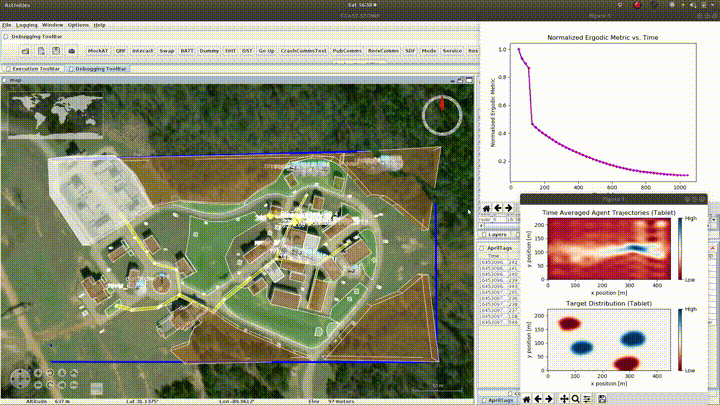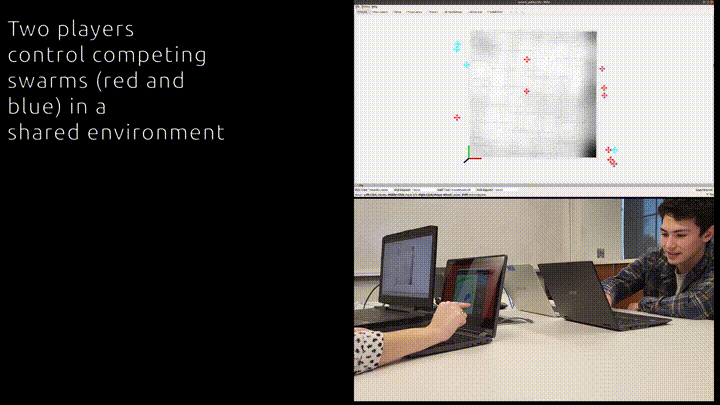Publications
Scale-Invariant Human-Swarm Control Systems

One of the biggest problems in swarm robotics is that human users have difficulty reaping the benefits of swarm robotic systems (i.e., robustness, information gains) due to the high cognitive load they experience when controlling them. Cognitive load has been shown to scale with both the size of the swarm a user controls, as well as with the complexity of the environment in which the swarm and user operate (due to both agent-agent interactions and the length of time the operator has to reason about decisions). Swarm operators need interfaces and control algorithms that are scale-invariant with respect to swarm size, enabling operators to specify high-level objectives to their swarm without having to reason about the different ways a swarm will complete their objective based on the number of agents at the swarm's disposal. In this work, my colleagues and I develop an end-to-end system for a human operator to send scale-invariant tactical commands to their robot swarm in a field environment. We successfully demonstrate the scale-invariance of our system and the flexiblity our system affords users for prescribing different high level objectives to their swarm.
Associated Publications
Scale-Invariant Specifications for Human-Swarm Systems
Joel Meyer*, Ahalya Prabhakar*, Allison Pinosky, Ian Abraham,
Annalisa Taylor, Millicent Schlafly, Katarina Popovic, Giovani Diniz, Brendan Teich,
Borislava Simidchieva, Shane Clark, Todd D. Murphey
Journal of Field Robotics, 3, 368-391, March 2023.* denotes equal contribution.
High Cadence Human-Swarm Control Systems

In the same vein as the above work, human-swarms sytems must also be scalable with respect to the complexity of the environment the swarm and human user are operating in. There is currently a lack of human-swarm systems that are designed to operate in these kinds of environments, which we term "high cadence". In light of this, I developed a game benchmark for testing real-time human-swarm control algorithms in a high-cadence environment, enabling researchers to empircally compare different algorithms and interfaces with each other with respect to performance in the game. The environment is open-source, enabling researchers to create different environments and game rules for testing human-swarm algorithms and interfaces.
Associated Publications
A Game Benchmark for Real-Time Human-Swarm Control
Joel Meyer, Allison Pinosky, Thomas Trzpit, Ed Colgate, and Todd D. Murphey
IEEE International Conference on Automation Science and Engineering, Aug 2022.
